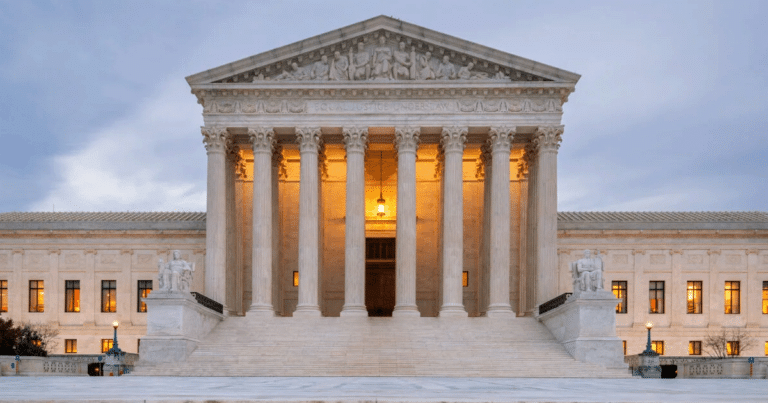
The Supreme Court just wrapped up its summer session, and it feels like they’ve pulled a wild card from the deck. With major decisions that could upend years of policy—and perhaps have an impact on the 2024 Election—it’s time to pay attention. In 2022, the Supreme Court overturned Roe v. Wade, which had a significant effect on the midterms.
But now, the court is weighing in on issues that could affect every last American.
Trivia Question: Who was the first Chief Justice of the United States Supreme Court? (Answer at the end of the article.)
This week, the court issued a ruling on a long-standing but controversial policy. This policy, known as the “Chevron deference” doctrine, gave power to the executive branch that is supposed to stay with the courts. Agencies had the power to decide regulations that only courts should decide. And the highest court in the land had something to say about that.
From Axios:
The Supreme Court on Friday curtailed the executive branch’s ability to interpret laws it’s charged with implementing, giving the judiciary more say in what federal agencies can do. Chief Justice John Roberts, writing the opinion of the court, argued Chevron “defies the command of” the Administrative Procedure Act, which governs federal administrative agencies. Further, he said it “is misguided” because “agencies have no special competence in resolving statutory ambiguities. Courts do.”
The Supreme Court overturned the “Chevron deference” doctrine, a policy that has been in place since the Reagan era. This policy required courts to defer to federal agencies in interpreting laws. That meant the EPA had more power than the courts when deciding on environmental issues.
To the casual observer, that appeared to undermine the Constitution’s requirement that the courts—not agencies run by the president—are supposed to interpret laws. For over 40 years, the White House had direct control over how businesses were regulated, which seemed to violate the Constitution.
A Shift in Power
All six right-leaning justices voted to overturn this doctrine, which outraged the liberal wing of the court. This ruling could very well defang the federal government’s ability to manhandle private businesses. It might even shut down infamous decisions from the Biden administration, such as those hurting energy prices.
The decision marks a significant shift in power from federal agencies back to the judiciary. This could mean that future regulatory actions will face more stringent judicial scrutiny, ensuring they adhere more closely to legislative intent rather than agency interpretation.
Implications for the Future
This ruling isn’t just a legal technicality—it’s a major victory for conservatives who have long argued for limited government and stricter adherence to the Constitution. By reining in the power of federal agencies, the Supreme Court is ensuring that laws are interpreted by the courts as intended by the framers of the Constitution.
This decision also highlights the ongoing battle between different branches of government over the scope and limits of their powers. The judiciary’s assertiveness in this case could set a precedent for future cases where the balance of power between the executive and judicial branches is in question.
In the grand scheme of things, this ruling may pave the way for more challenges to federal regulations and policies, especially those seen as overreaching or improperly interpreted by federal agencies. For businesses and individuals affected by these regulations, the court’s decision could bring relief and a greater sense of legal clarity.
It’s about time the Supreme Court started pulling back the reins on runaway federal power, isn’t it? This ruling is a huge win for those of us who believe in limited government and the Constitution’s original intent. I, for one, am thrilled to see the judiciary reasserting its role in interpreting laws.
What do you all think? Is this the beginning of a trend toward more judicial oversight, or just a one-off victory? Let me know your thoughts!
Key Takeaways:
- The Supreme Court has significantly restricted the Chevron doctrine.
- This 40-year-old rule gave federal agencies power to interpret laws over federal courts/
- It’s seen as a major victory for conservatives seeking limited government.
- The decision delivers a substantial blow to Democrats, who favor broader regulatory authority.
Trivia Answer: John Jay was the first Chief Justice of the United States Supreme Court.
Source: Axios